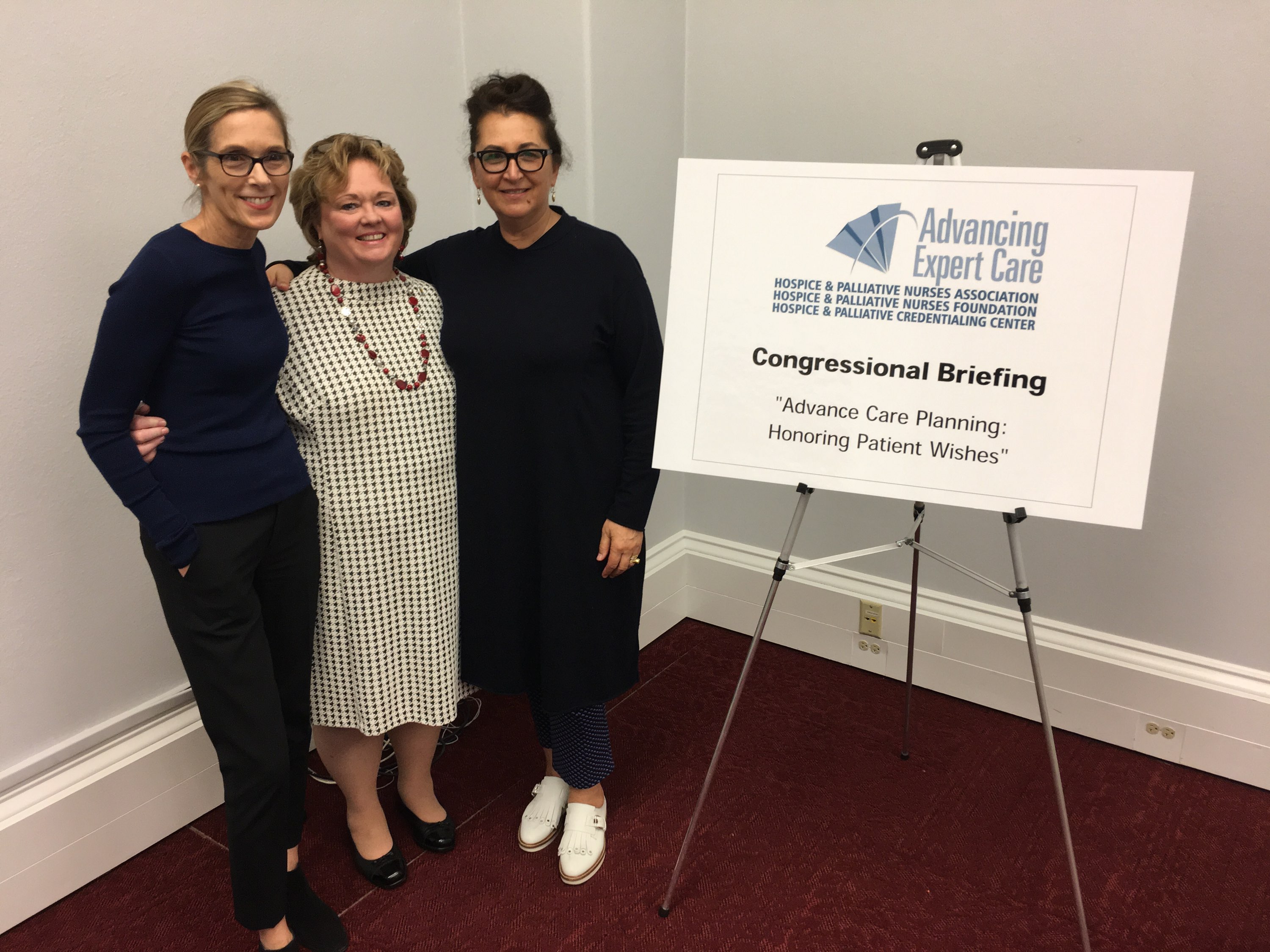Over the past two years, I was nursing consultant and advisor to the production team of the new film, Defining Hope. As we worked, we spent hours together having difficult, but meaningful conversations about the end-of-life. Most of us came to the project possessing definite ideas about our end-of-life wishes. What we didn’t expect to happen, resulting from filming the lives of the people profiled facing life-threatening illness, was recognizing the real moments of ambiguity people have about treatment and end-of-life choices.
My dream is that this film is a tool used by people in the healthcare field to look at patients through a different lens, and also by the public who can hear the words of family members in the film as they let their loved ones go, or support their wishes. We need to let our loved ones know what we want.
– Carolyn Jones, Filmmaker, Defining Hope
Most people don’t want to talk about death. You might have that conversation silently in your head lying in bed at night planning your next move with a loved one the next time the moment feels right. It’s a hard conversation to kickstart, even with people you love.
Filmmaker Carolyn Jones started interviewing nurses over six years ago for the The American Nurse Project. She reports that she repeatedly heard from nurses across the country that we’re not dying very well in this country. She saw this as a challenge to changing that and made the film, Defining Hope.
Carolyn Jones poured her passion and guts into the making of the documentary, Defining Hope—which will premiere at the Academy on November 1st. This film joins the ranks of the national movement to change the culture around death in America. It will impact the lives of individuals and families and bring much-needed attention on current federal policy on end-of-life care.
The documentary weaves together stories of patients who are confronted with life-threatening illnesses. Through the stories of these patients, families, nurses, and health care professionals, Defining Hope brings the conversation around quality end-of-life care to the forefront of our minds.
It’s hard for people to think about end-of-life and death so the topic demands that the film be entertaining. It may make you cry, but you will also laugh. It’s a film that hopes to normalize conversations about the end-of-life, and help us make better choices for ourselves and our loved ones. It hopes to challenge you to think about what makes life worth living.
Defining Hope follows these three patients, and others, as they face death, embrace hope, and ultimately redefine what makes life worth living: Diane is a nurse caring for end-stage cancer patients who is confronted with her own complex diagnosis; 23-year-old Alena undergoes a risky brain surgery that has the potential to damage her short-term memory and 95-year-old Berthold lives with his elderly wife who struggles to honor his wish of dying peacefully at home.
The deeper we dove into the topic of death, as we made the film the freer we felt to engage our family and friends in conversations about end-of-life. It may be a leap we all have to take.
Upcoming Screenings
The George Washington University School of Nursing’s Center for Health Policy and Media Engagement and Center for Aging, Health and Humanities are proud to host a special screening of Defining Hope on Thursday, November 9 at 7 PM in Washington, DC.
Pre-order Tickets Now
Defining Hope premiered October 17 at the Heartland Film Festival in Indianapolis, Indiana and won “Best Premiere, Documentary Feature” of the festival.
To find more opportunities to view Defining Hope or to learn more, visit Hope.film.
Support
The film’s research and production were generously funded in part by the Jonas Center for Nursing and Veterans Healthcare, a philanthropy dedicated to advancing the nursing profession and improving healthcare through grants and programs. Support also comes from the American Nurses Foundation, dedicated to transforming the nation’s health through the power of nursing.
The film is also made possible through the generous support of Jeannie Patz Blaustein, The E. Rhodes and Leona B. Carpenter Foundation, and The Rita and Alex Hillman Foundation. Defining Hope is distributed by KAOS Connect and Screenvision.
Contact Hours
Nurses will receive 1.25 free contact hours for watching the film and completing the evaluation thanks to the generous support of Walden University. Walden University is accredited as a provider of continuing nursing education by the American Nurses Credentialing Center’s Commission on Accreditation.
This blog post was originally published on the New York Academy of Medicine’s News & Blog on 10/31/17 and reposted here on HealthCetera with permission.
Over the past two years, I was



